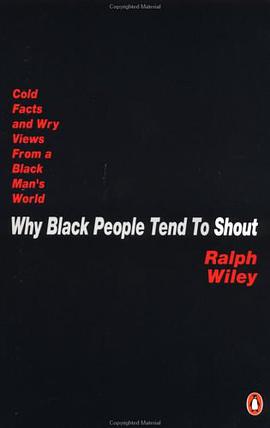
Book Description
Packed with the technological details and insights into military strategy that fans of Tom Clancy relish, The Silent War is a riveting look at the darkest days of the Cold War. It reveals, in gripping detail, the espionage, innovative high technology, and heroic seafaring the United States employed against the Soviet Union in the battle for nuclear and military supremacy. John Pi?a Craven, who shared management responsibility for the submarine-borne Polaris missile system, captures the excitement and the dangers of the times as he recounts the true stories behind some of the century's most shocking headlines and reveals harrowing episodes kept hidden from the public.
Craven describes for the first time the structural problems that almost caused the destruction of the Nautilus, the world's first nuclear-powered submarine, and presents startling information about the race to recover a hydrogen bomb from the B-52 bomber that went down off the coast of Spain. In a report no fan of The Hunt for Red October will want to miss, he provides a fascinating, authoritative perspective on the Navy's reaction to the rogue Soviet submarine and its mission.
A major contribution to Cold War history and literature, The Silent War will appeal to military buffs and fans of nonstop adventure thrillers alike.
Download Description
The Cold War was the first major conflict between superpowers in which victory and defeat were unambiguously determined without the firing of a shot. Without the shield of a strong, silent deterrent or the intellectual sword of espionage beneath the sea, that war could not have been won. John P. Craven was a key figure in the Cold War beneath the sea. As chief scientist of the Navy's Special Projects Office, which supervised the Polaris missile system, then later as head of the Deep Submergence Systems Project (DSSP) and the Deep Submergence Rescue Vehicle program (DSRV), both of which engaged in a variety of clandestine undersea projects, he was intimately involved with planning and executing America's submarine-based nuclear deterrence and submarine-based espionage activities during the height of the Cold War. Craven was considered so important by the Soviets that they assigned a full-time KGB agent to spy on him. Some of Craven's highly classified activities have been mentioned in such books as Blind Man's Bluff, but now he gives us his own insights into the deadly cat-and-mouse game that U.S. and Soviet forces played deep in the world's oceans. Craven tells riveting stories about the most treacherous years of the Cold War. In 1956 Nautilus, the world's first nuclear-powered submarine and the backbone of the Polaris ballistic missile system, was only days or even hours from sinking due to structural damage of unknown origin. Craven led a team of experts to diagnose the structural flaw that could have sent the sub to the bottom of the ocean, taking the Navy's missile program with it. Craven offers insight into the rivalry between the advocates of deterrence (with whom he sided) and those military men and scientists, such as Edward Teller, who believed that the United States had to prepare to fight and win a nuclear conflict with the Soviet Union.
Amazon.com
In October 1962, the United States government demanded that the Soviet Union remove long-range tactical missiles that it had positioned in Cuba, a short flight from targets like Washington and New York. After nearly a week's wait, during which the world braced for nuclear war, the Soviet government finally relented. It did so, in part, because its capitalist foe had one weapon that it then did not: 10 dozen submarine-mounted nuclear missiles that could be fired from beneath the waves and reach targets inside the Soviet Union within a matter of minutes.
In The Silent War, John Craven, an architect of the Polaris missile program, writes that the episode offered unambiguous proof of the value of "a strong silent deterrent" and of the importance of a superb submarine force in preserving the balance of power. In this memoir, he recounts the evolution of the Polaris weapons system during the cold war. Along the way, he reveals little-known incidents of espionage and saber rattling that will give readers pause to wonder how war was avoided for all those years. A bonus for Tom Clancy fans (who are likely to enjoy his book in any event) is Craven's sketchy but fascinating tale of a real hunt for a lost Soviet submarine that took place during his tenure as well as his accessible but nonetheless detailed account of the advanced military technology he helped bring into being.
--Gregory McNamee
From Publishers Weekly
In May 1968, submarine specialist John Craven, then chief scientist of the navy's special projects office, had just crossed into Virginia from Washington, D.C., on his way home from work when he heard an alarming news report on the radio. The USS Scorpion, a submarine, was missing in the ocean with 99 men on board. On hearing the news, Craven writes, "I immediately turned my car around and headed for the war room of the Pentagon." Amazingly, the loss of the Scorpion coincided with the disappearance of a Soviet submarine. How Craven spearheaded the search for the two ships a search that inspired The Hunt for Red October is the centerpiece of this fascinating series of set pieces that delve into the life-and-death mechanics of Cold War-era submarine service. Craven, who had previously been known as the head of the Polaris sub-based missile program, has surfaced mysteriously in the press over the years, most recently in the critically acclaimed Blind Man's Bluff: The Untold Story of American Submarine Espionage; here, he is forthright about much of his background and activities. Anecdote-based chapters include descriptions of repairs to a newly launched USS Nautilus, rough briefings to the press and to the chain of command on Polaris, diving into the transoceanic cable-tapping Man-in-the-Sea program and much more. Craven quotes Byron, Verne and others with feeling throughout, and his explanations of the complicated physics related to his various projects are clear if sometimes still classified making this is a distinctively well-crafted intelligence-community memoir. (Apr. 4) Forecast: As Russo-American relations over espionage heat up, this book should find a general audience primed for a re-examination of the intricacies of the Cold War. While not quite Red October, it should reach beyond the buff market.
From Booklist
Sherry Sontag's best-selling Blind Man's Bluff (1998) has created a ready market for Craven's memoir of his role in the U.S. Navy's submarine espionage against the Soviet Union. Craven designed the navy's minisubmarines in the 1950s and 1960s, and technology perforce guides many of his anecdotes. Other flavors in his war storytelling are bureaucratic politics and encounters with such forceful personalities as Edward Teller and Hyman Rickover. Craven's style is to jump from one adventure to the next, which in itself keeps the pages flapping. Insofar as the intelligence agencies allow, he reveals his involvement with such submarines as the Nautilus, the Polaris ballistic missile boats, the ill-fated Thresher and Scorpion, and the sunken Soviet sub that the CIA partially raised in the early 1970s. That last sub, Craven theorizes, was a rogue that sank from a catastrophic accident while launching a nuclear missile at Hawaii--a sensational claim that exemplifies the now-it-can-be-told aspect of Craven's reminiscences. A cinch to grab readers' and journalists' attention.
Gilbert Taylor
From Library Journal
A retired chief scientist of the navy's Special Projects Office and a minor character in Sherry Sontag's Blind Man's Bluff, Craven does not generate enough information or dramatic activity to create a Cold War espionage best seller along the lines of Blind Man's Bluff or Tom Clancy's The Hunt for Red October. The author was a pivotal player in the underwater research for the navy and is especially remembered for his work on deep-sea submersibles. Unfortunately, he does not reveal much that is not already known, except perhaps that the Soviet missile sub that sank around the time of the USN Scorpion was possibly a rogue and may have sunk while trying to launch a missile toward Hawaii. A good read about undersea research, this is ultimately not as not as riveting as other Cold War expos s. This is a hot topic, however, and little has been declassified to date. Recommended for military collections.
Richard Nowicki, Emerson Vocational H.S., Buffalo
About Author
John Pi?a Craven was the chief scientist of the Navy's Special Projects Office from 1958 to 1970 and won two Distinguished Civilian Service Awards. He later worked as director of the Law of the Sea Institute and is currently president of the Common Heritage Corporation. He lives in Honolulu, Hawaii.
Book Dimension:
length: (cm)21.5 width:(cm) 14
具體描述
讀後感
評分
評分
評分
評分
用戶評價
相關圖書
本站所有內容均為互聯網搜索引擎提供的公開搜索信息,本站不存儲任何數據與內容,任何內容與數據均與本站無關,如有需要請聯繫相關搜索引擎包括但不限於百度,google,bing,sogou 等
© 2025 qciss.net All Rights Reserved. 小哈圖書下載中心 版权所有





















